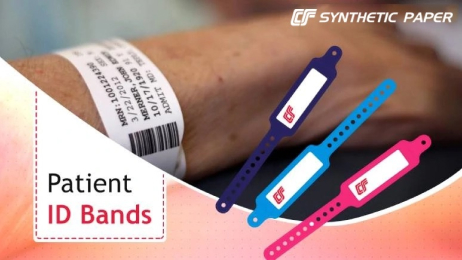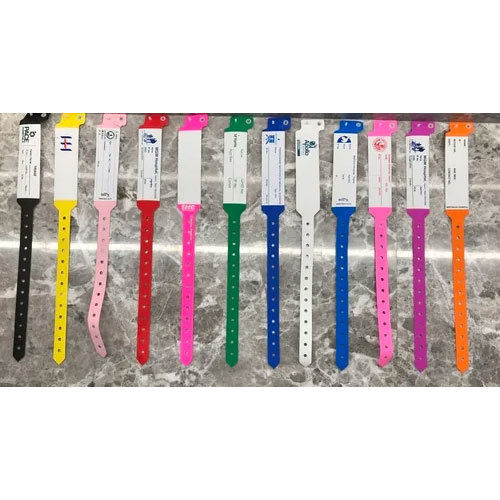Understanding the Advanced Advancements Behind the Patient Identification Band
Understanding the Advanced Advancements Behind the Patient Identification Band
Blog Article
Exploring the Various Sorts Of Patient Identification Band Utilized in Medical Facilities
In the complex globe of medical care, the vital role of Patient Identification bands often goes undetected. These bands, varying from simple paper wristbands to advanced RFID bands, create the backbone of Patient safety methods, making sure precision in Patient Identification. Yet, the large variety of these bands, each with its special advantages and restrictions, is commonly neglected. As we browse via this subject, one might gain understanding right into the subtle complexities and important relevance of such bands in medical facilities.
Understanding the Significance of Patient Identification Bands
While they may appear like mere accessories, Patient Identification bands play an important function in clinical centers. These bands serve as a vital device for verifying Patient identity, protecting against medical errors connected to misidentification. Patient Identification bands additionally aid in simplifying administrative tasks, guaranteeing precise record-keeping and payment.
Traditional Paper Wristbands: Their Use and Limitations
Conventional paper wristbands have been a staple in Patient Identification across numerous medical centers. While their usage prevails, they harbor certain limitations that might influence their efficiency in Patient management. This area will certainly focus on the range of their application and the inherent disadvantages related to their usage.
Paper Wristbands: Use Extent
In the realm of Patient Identification, paper wristbands have actually long held a crucial duty. These bands are generally utilized in outpatient setups, where the Patient's remain is short-lived. Despite improvements in modern technology, the modest paper wristband remains a dependable and affordable option for Patient Identification in numerous medical care scenarios.
Limitations of Paper Wristbands
Regardless of their extensive use, paper wristbands are not without their disadvantages. Their physical sturdiness is one of the substantial limitations. Direct exposure to water, sweat, or harsh handling can provide them unreadable or perhaps trigger them to degenerate. Additionally, paper wristbands often do not have the technical abilities of more modern options, such as barcoding or RFID chips, limiting their functionality to merely presenting created info. The failure to update or change the data on the wristband is one more shortcoming. Additionally, if the details is transcribed, clarity can be compromised, bring about prospective misidentification. Lastly, paper wristbands can trigger pain or skin inflammation to some patients, particularly when worn for extensive periods.
Barcoded Wristbands: Improvements in Patient Identification
While Patient Identification has long been an important facet of medical care, the development of barcoded wristbands represents a considerable leap onward. These bands leverage the simpleness of barcoding modern technology, permitting for Patient info to be swiftly scanned and accessed. They enhance the speed and accuracy of Patient Identification, minimizing the danger of medical errors related to misidentification.
Radio Regularity Identification (RFID) Bands: an Action In The Direction Of Futuristic Health Care
The evolution of Patient Identification bands has caused the development of Radio Frequency Identification (RFID) Bands (patient identification band). These ingenious gadgets existing crucial benefits for health care facilities, offering an extra effective and technologically advanced means of Patient Identification. The implementation of RFID in medical care is a considerable step in the direction of a much more advanced method to Patient monitoring and security
Understanding RFID Bands

RFID Bands: Key Benefits
Primarily, these bands improve Patient safety and security by providing accurate, instant Identification, consequently lowering medical errors. RFID bands can store a large quantity of Patient information, consisting of clinical background and allergies, allowing customized treatment. On the whole, RFID bands represent a substantial development in Patient Identification modern technology, benefiting both clients and health care carriers.
Implementing RFID in Healthcare
As we enter a technologically advanced era, the implementation of RFID bands in health care ends up being progressively crucial. These bands supply a smooth method to track and determine clients, ensuring their safety and boosting performance in therapy procedures. RFID bands supply countless benefits over conventional Identification methods. They can save a substantial amount of data, consisting of the Patient's case history and treatment strategies, which can be quickly accessed by doctor. This data aids physicians make notified decisions pertaining to the Patient's treatment strategy. RFID bands decrease medical mistakes by providing exact Patient Identification, which is vital in avoiding misdiagnosis or incorrect medication administration. Therefore, the implementation of RFID bands is a substantial step in the direction of boosting Patient safety and medical care delivery.

Color-Coded Wristbands: Assisting in Quick and Accurate Diagnosis
In the busy environment of a clinical center, color-coded wristbands have arised as essential devices for swift and check this site out specific Identification of a client's medical problem. These wristbands, used by patients, lug certain colors that represent different clinical conditions or statuses. As an example, red might show allergic reaction risks, while yellow could represent a fall threat. This system is developed to supply instant visual hints to doctor, boosting Patient safety and security and care high quality. In emergency situation circumstances, using these wristbands enables for quick decision-making. The efficiency of color-coded wristbands depends on the harmony of color interpretation throughout healthcare organizations, calling for common requirements for regular application.
Strategies for Effective Application and Administration of Patient ID Bands
Accomplishing optimal usage of Patient Identification bands necessitates a well-structured approach for their application and monitoring. Patient education and learning is likewise essential; people should recognize the function of the bands and the demand for their constant wear. It's crucial to have a backup strategy in area, such as barcode scanning or biometrics, to why not find out more guarantee that Patient Identification is never endangered.
Final thought
Patient Identification bands are vital in clinical facilities to make certain safety and accuracy. Typical paper, barcoded, RFID, and color-coded wristbands each hold unique advantages, ranging from cost-effectiveness to innovative data storage and instant clinical alerts. Efficient execution and management of these bands can substantially lower medical errors, improve performance, and improve general Patient treatment. Hence, understanding and utilizing these Identification tools is paramount for preserving high requirements in medical care.
These bands, differing from straightforward paper wristbands to innovative RFID bands, create the backbone of Patient security procedures, making sure accuracy in Patient Identification.The development of Patient Identification bands has actually brought concerning the appearance of Radio Regularity Identification (RFID) Bands. Overall, RFID bands represent a significant advancement in Patient Identification innovation, benefiting both clients and health care companies.
RFID bands decrease medical errors by offering look at more info accurate Patient Identification, which is vital in stopping misdiagnosis or wrong medication management. Patient education is also crucial; patients have to comprehend the objective of the bands and the requirement for their consistent wear.
Report this page